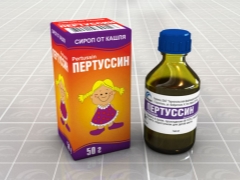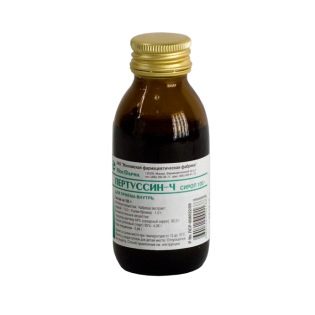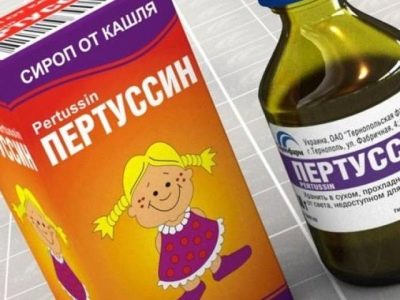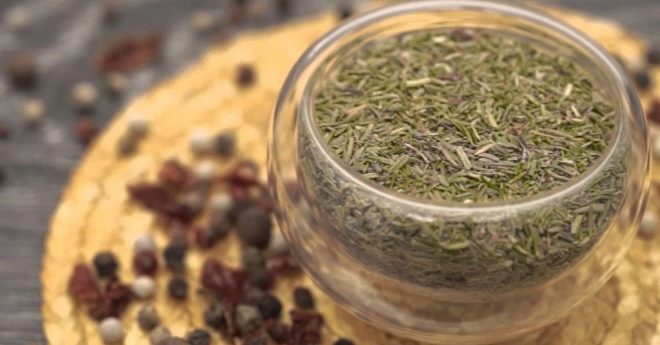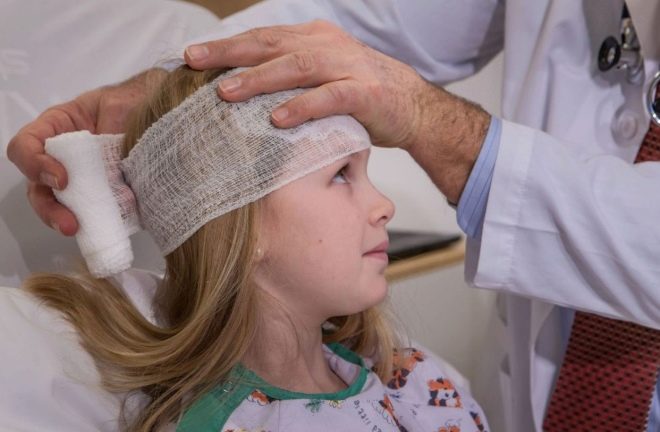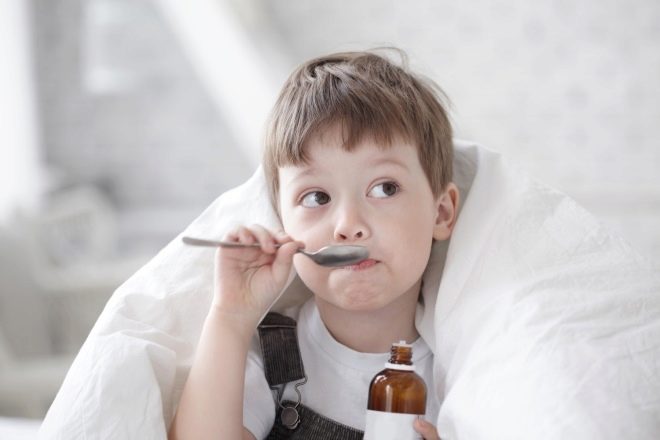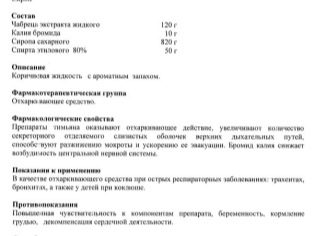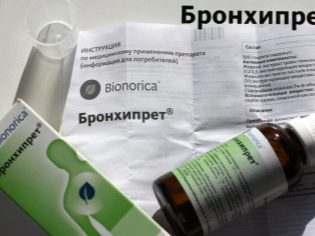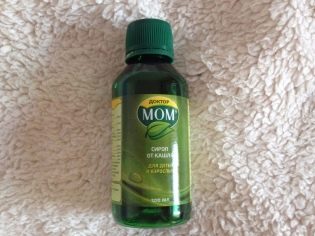Pertussin for children: instructions for use
The variety of medicines that help reduce cough and improve sputum production is very large. One of these medicines can be called Pertussin. It has been used in the treatment of cough for many decades, but is such a drug relevant today? Is it possible to give it to children, in what cases and in what dose? Can Pertussin harm the body of a child and what analogues can replace it?
Release form
Pertussin is a domestically produced medicine and is produced by several Russian pharmaceutical factories. in two forms:
- Syrup. Such a tool is a thick, viscous liquid with a brown tint and a pleasant herbal scent. It is sold in glass bottles, which often contain 100 grams of the drug, but some pharmaceutical companies also have 50 g bottles and 125 g syrup in their assortment.
- Solution intended for oral administration. This form also has a brown color and a pleasant smell, but it is more liquid. The solution is sold in bottles of 100 grams only.
Also in pharmacies you can find a syrup called Pertussin H. Its composition and effect is the same as that of ordinary Pertussin, and the presence of the letter H in the title indicates the main ingredient - thyme. There are no distinctive features of this medicine, and it can be used as a substitute for Pertussina.
Pertussina solid form does not exist, but the drug is often confused with pills. Pectusin. They have a completely different composition (such medicine contains eucalyptus oil and menthol) and another mechanism of action, so you should not replace Pertussin liquid with such tablets.
Composition
There are two active ingredients in any form of Pertussin:
- The first is an extract derived from a plant herb called creeping thyme or creeping thyme. Its amount per 100 g of the drug is 12 grams.
- The second active ingredient of the syrup is represented by potassium bromide, which is contained in 100 grams of the drug at a dose of 1 g.
Additional components of Pertussin and Pertussin H are ethyl alcohol (80% or 95%), sucrose and water.
Operating principle
Reception of Petrussina helps expectoration of sputum, makes the secret of the bronchi more fluid and accelerates its separation from the lungs. This effect of the drug due to the essential oil from the extract of thyme (thyme). It is his presence that activates the secretory function of the bronchial glands and reduces the viscosity of mucus, which is secreted by the bronchi, as a result of which the expectoration of sputum is facilitated.
The second ingredient in the composition of the drug (potassium bromide) affects the patient's central nervous system, reducing its excitability and thereby reducing the cough reflex. Thanks to this substance Pertussin has a mild sedative effect, and the number of coughing episodes is reduced.
Indications
Pertussin is prescribed for acute diseases of the respiratory system, the symptom of which is a wet (productive) cough with viscous sputum. The drug is used for:
- tracheitis;
- whooping cough;
- ARVI;
- bronchitis;
- COPD;
- tracheobronchitis;
- flu;
- cystic fibrosis;
- pharyngitis;
- pneumonia;
- bronchial asthma;
- laryngitis
In severe cases of such diseases, as well as an unproductive dry cough, Pertussin is usually not prescribed, but is replaced by stronger and more effective means.
How old are children allowed?
Since pertussin contains potassium bromide, this remedy is not indicated for patients under three years of age, since young children have an increased risk of developing bromism.
Medication is also given to children 3 years and older with caution.After all, ethanol is one of its auxiliary ingredients that provide long-term storage of syrup.
Benefits
Among them are:
- The taste of the medicine is sweet and most patients find it pleasant, therefore, it is often simple to give medicine to a child.
- Liquid form is convenient to use in children.
- The drug is very effective in most acute respiratory infections.
- The action of the drug is a combination - Pertussin simultaneously helps expectoration of sputum and calms the nervous system, affecting the cough reflex.
- The drug is allowed in children.
- It is inexpensive.
Syrup Disadvantages
Note:
- The composition of Pertussina includes alcohol.
- Sugar is added to the preparation in a rather large amount as a filler.
- Long-term use or very large doses can adversely affect the patient's condition.
- There are more effective expectorant drugs (many doctors call Pertussin obsolete medicine).
- The tool should not be given until the age of three. If the child is not yet 3 years old, he has to pick up an analogue.
Contraindications
Pertussin is forbidden to use not only in young children, but also in such situations:
- if the child has an intolerance to thyme or potassium bromide;
- with epilepsy;
- for brain diseases;
- with liver pathologies;
- with heart failure;
- with diabetes (medication contains a large percentage of sucrose);
- with traumatic brain injury;
- with hereditary problems with the absorption of carbohydrates.
Side effects
Since Pertussina has a plant base, taking this medicine can cause allergies. If the use of the drug provoked fever, rash and other signs of an allergic reaction, it is necessary to refuse treatment, take a sorbent and consult a doctor.
Some children the medicine can cause heartburn or sour belching. When it appears, it is recommended to take antacid.
If you give the drug for a very long time, bromism may appear. Such poisoning is manifested by runny nose, skin rash, apathetic condition, general weakness, sleep disorders, conjunctivitis and other negative symptoms.
If these symptoms occur, you need to cancel the medication and see a doctor.
Instructions for use
Pertussin is given to children after a meal, since taking it at another time may affect the appetite of the little patient. The drug is taken three times a day.
Recommendations for use:
- If required, the syrup can be diluted with a small amount of pure water, which should be non-hot. Usually, such a dilution of the drug is used before the age of 6 years to make it easier for the child to swallow it.
- The duration of treatment is 5-14 days (most often, the drug is given 7 or 10 days), and a longer reception is allowed only by doctor's prescription. On reuse of the drug should also talk to a pediatrician.
- Pertussina dosage in childhood is lower than for adults. Patients 3-6 years at a time give half a teaspoon of syrup or solution. A child of 6-12 years old can be given 1-2 teaspoons (5-10 ml), and the dose of medication for teenagers is one dessert spoon (15 ml).
Inhalation
Sometimes the doctor may prescribe the use of Pertussina not inward, but in the form of inhalation. For such procedures, a nebulizer is needed, and the drug is taken only in the form of a solution (syrup for inhalation use is not suitable). In addition, the tool must be diluted with saline:
- For children under the age of 12, 2 ml of saline is added to 1 ml of Pertussin.
- If the patient is older than 12 years, then 1 ml of saline and Pertussin is poured into the nebulizer.
The procedure is carried out 3-4 times a day for 5-10 minutes. During inhalation, the child should inhale the drug calmly so as not to provoke coughing fits.
Overdose
Excess doses of Pertussin leads to nausea. Too much syrup or solution, as a rule, does not cause other negative symptoms.
A child with an overdose should be given some kind of sorbent, and if the condition has worsened, it is recommended that a physician be examined.
Interaction with other drugs
The drug can be prescribed together with analgesics, antibiotics, vitamins, antiviral and many other medicines that are prescribed for the pathologies of the respiratory system.
However, like other expectorant drugs, Pertussin should not be given with medicines. able to inhibit the cough reflexAfter all, this combination will prevent the expectoration of sputum and worsen the patient's condition.
Terms of sale
Pertussin can be purchased at most pharmacies without any difficulties, because it is a Russian drug from the group of non-prescription drugs. The cost of the medicine depends on the manufacturer and the volume of the bottle, but it is not high and, on average, you need to pay 20-30 rubles for a bottle of 100 grams of syrup.
Storage conditions
The shelf life of the solution and syrup, as well as the drug Pertussin H is 4 years.
For storage Pertussina requires a dry and cool place (recommended temperature - below +15 degrees). Since the medicine is sweet, it is important to take care of its inaccessibility for small children during storage in order to prevent a situation when the child finds the syrup and drinks it in a large dose.
Expiration medication should not be given to children.
Reviews
Many mothers speak well about the treatment with Pertussin, because it is a medicine they know from childhood that effectively copes with a wet cough. The drug is pleasant for its pleasant taste and affordable price.
The drawbacks of the drug are the presence of alcohol and a large amount of sugar in the composition, as well as risk of allergies. According to parents, such a syrup is generally well tolerated, and side effects, when used in an age-adjusted dosage, occur very rarely.
Analogs
If for some reason it is impossible to give Pertussin to the child, such medication can replace other medicines with expectorant effects. Similar plant-based products are presented in a wide range of pharmacies. Analogs of Pertussin include:
- Bronchipret. The composition of this medication also includes an extract of thyme, but it is also supplemented with an extract of ivy. Bronchipret is produced in two liquid forms - in syrup it is used from 3 months of age, and drops can be given to a child over six years old.
- Codelac Broncho with thyme. This expectorant is made in the form of an elixir. In addition to the extract from the thyme, it contains glycyrrhizic acid and Ambroxol. Children it is prescribed from 2 years of age.
- Herbion. Such syrups include mallow, plantain, thyme, ivy, primrose. They are used in the treatment of cough in children older than 2 years.
- Bronhikum. The basis of such a syrup, like Pertussina, is thyme. The drug is approved for the treatment of children from 6 months of age.
- Gedelix The main component of this drug is ivy extract. In syrup, Gadelix is prescribed at any age, even to babies. Its counterpart is Prospan syrup. If the drug is used in the form of drops, it should not be given until 2 years of age.
- Dr. Mom. This syrup contains many extracts from medicinal plants, among which are extracts from aloe, devasile, ginger, turmeric and licorice. They are supplemented with levomenthol. The drug is used for wet cough in children three years and older.
All these drugs are sweet to the taste and are accepted by most toddlers without any difficulties. However, giving them to a child, without first consulting with a pediatrician, is not worth it. Their use is recommended only after examining the doctor, who will determine the cause of cough and its features, after which it will prescribe a suitable medication.
It is important to understand that Pertussin and its analogs affect only one symptom - cough. In order for the child to recover faster, doctors prescribe such drugs in combination with other drugs.
That is why self-use of expectorant drugs (even on the basis of medicinal herbs) in the treatment of children is not worth it.
